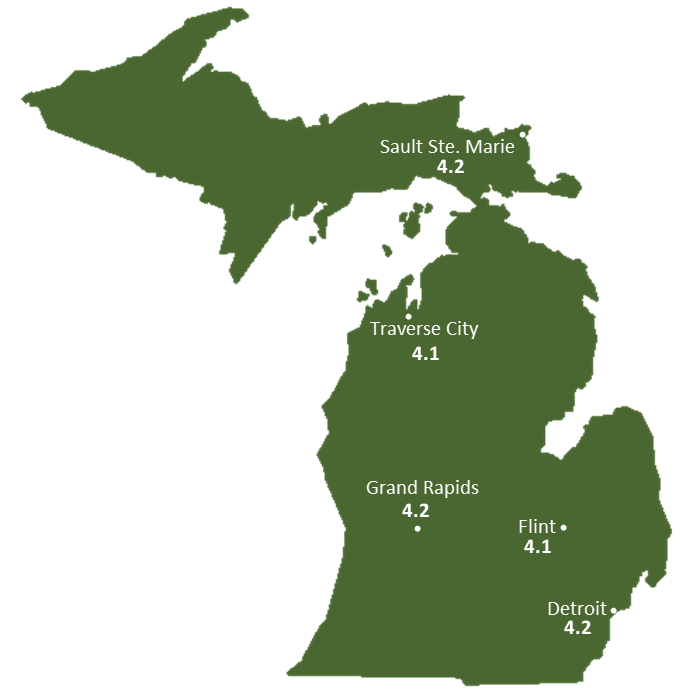Michigan Sunlight Hours & Renewable Energy Information

Quick Green Energy Summary for Michigan
Sunlight
State Sunlight Rank: 42/50
Average Annual Sunlight Hours: 2300 hours
Clear Days: 71 days per year
Summer Peak Sun Hours: 4.71 hours per day
Winter Peak Sun Hours: 2.7 hours per day
Average Peak Sun Hours  : 4.0 hours per day
: 4.0 hours per day
Wind
State Wind Rank  : 12/50
: 12/50
Average Annual Wind Speed: 0.10 miles per hour
More Information on Michigan Green Energy
Michigan, the great lakes state is also a great place for solar and wind power, coming in with an average of 4 peak sun hours per day. That doesn’t sound like much, but with improving technology and liberal tax credits for Michigan residents, a solar power system is a legitimate option for a home or business.
Michigan is still a leader in solar energy even with a low average amount of peak sun hours per day because of their progressive citizens and government. Setting high goals for the future, the installed capacity of solar energy in Michigan increases every year and is home to some of the most jobs in renewable energy in the country. A smart move for the government and residents of Michigan to invest in renewable energy technology, because it’s a beautiful state with a thriving tourism sector and a lot of incentive for companies to bring their companies.
It goes to show that even with a not very favorable amount of peak sun hours in Michigan, with the right leaders, laws, and technology, any state in the country could make big steps towards more renewable energy sources.
A fixed tilt solar panel does not change angles to adjust with the sun, so looking at the average peak sun hours using a fixed tilt panel can set a good baseline for calculations. On average, the state of Michigan receives 4.0 daily peak sun hours.
This number obviously changes if you were to drill down and examine the peak sunlight hours on a daily basis because of the number of factors that can affect a solar panels ability. Natural factors, such as cloud coverage, weather, time of year and much more all impact the daily sun light hours and amount of solar insolation. Not every hour of sunlight will be converted at the same efficiency ratio, so it can help to look at the average when planning for your year.
 :
: